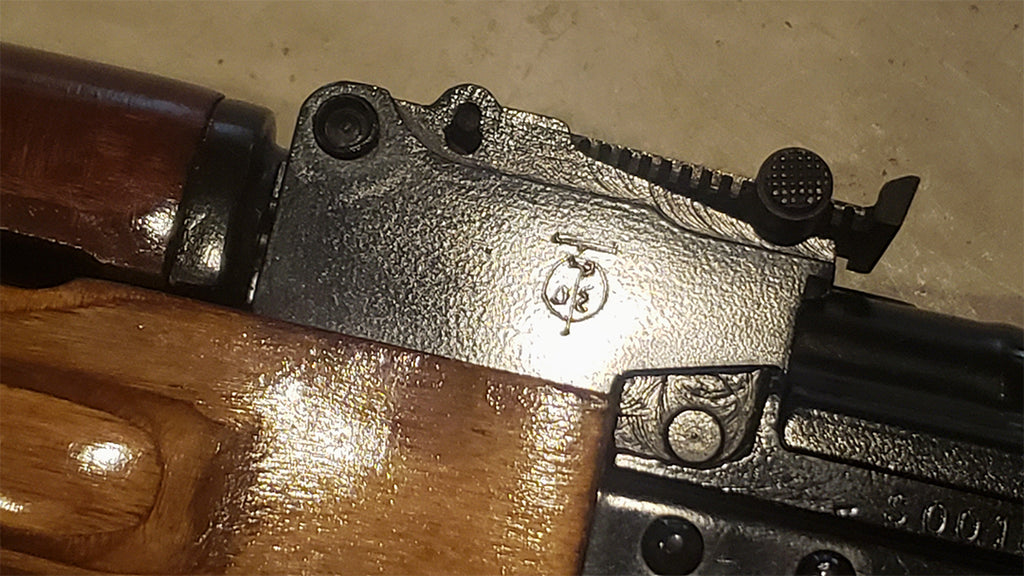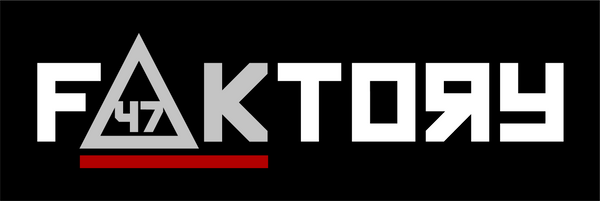Egyptian AK History, Maadi Factory 54

As we know, getting a correct and direct Soviet/Russian built AKM is nearly impossible in the United States due to decades of political turmoil between the two nations. However, there is a slight glimmer of hope for those who desire an authentic Kalashnikov. The Egyptian Maadi is a rifle that, for all intents and purposes, is an attainable and correct AKM that has been imported as a complete rifle to the United States. While these are still difficult to come by, they are out there and can be found with enough patience and money.
How the AKM came to Egypt
Following WWII, Egypt was left with massive numbers of weapons left behind by the Nazis and other countries. Stockpiles of 8mm Mauser ammunition was collected by the Egyptian government, so they reengineered the Swedish Ag m/42 to be used as their service rifle up until 1961. During this time, the Soviet Union had taken an interest in Egypt and decided to offer military aid in the form of standardized and effective weaponry.
The Soviet Union trained Egyptians in the proper manufacture of the AKM and imported materials to assist the Egyptian government. Build in Factory 54 in Cairo, the Maadi Company for Engineering Industries used genuine AKM components, paired with laminated wood furniture, to the exact specifications of the stamped AKMs built in the Soviet Union. Nearly every component was a perfect match, down to the placement of steel rivets and the palm swells in the front handguards. The official designation of the rifle was the ARM, or Automatic Rifle MISR.
When the Soviet Union decided to back away from Egypt, they took their assistance of the Maadi rifle with them. They did, however, leave behind their tools and some very skilled Egyptian engineers who still had permission to continue production of the Maadi rifles. AKs built in Factory 54 are often considered to be among the best AKMs in the world and are well known for their quality barrels. Depending on the details of how and when your Maadi was imported, it may still hold most of that quality today.

How to identify a Maadi
The notable differences are few, but easy to spot. Of course, the receivers have a factory stamp showing that they were manufactured by Maadi in Egypt. The pistol grip, while identical to the Soviet design as far as the dimensions, was made of molded plastic. The rear sights include graduations up to 1000 meters, as opposed to the 800 meter maximum found on a Soviet AK-47. And, maybe surprisingly, the select fire options only included “Safe” and “Semi-Automatic.” The four gas escape holes on the original AK-47s were omitted in favor of two gas relief holes on either side of the gas block. Beyond those minor differences, there were few other easily identifiable tells.
If you do find one of these rifles that was imported to the US and has not been tampered with since, you will find that the original AKM muzzle brake was removed, and a barrel nut was tack-welded in its place. The original and intact rifles that made it to the US were imported by Steyr, and only about 2000 of them made it before the importation was halted. This makes them a rare, but attainable, find in the United States with price tags usually starting above $2000. Even more rare is an original Maadi with a side folding stock that appears to be modeled after the East German MPiKMS-72; only about 50 of these rifles were imported making them extremely rare.
In addition to the ARM, the RML was also manufactured as a longer-range version of the AK, and usually had a 20” barrel, as well as the RPM that was designed as a squad automatic weapon.

Later Maadi Imports
After the import ban in the early 90s, Maadi rifles were still imported, but mostly as parts kits. If you find a Maadi that does not state somewhere on the receiver that it was imported by Steyr, it is a parts kit rifle.
From 1993-1995 PARS International Corp in Louisville imported Maadi rifles and sold them as ARM and RML rifles. Both rifles were sold with thumbhole stocks. The ARM was sold with a 16 1/3rd inch barrel and a tack welded muzzle nut, while the RML was sold with either a 16 or 20 inch barrel with the threads completely removed from the end of the barrel.
During the same time, ACC/Intrac based in Knoxville also imported Maadi rifles and sold them in similar configurations to Pars. The ARM was nearly identical to that the Pars version, and the RPMs were all sold with 20 inch barrels; the 1993 imported RPMs offered an attached bipod while later years omitted this feature.
Both PARS and Intrac are considered to be excellent rifles by collectors, though not quite as valuable as the original Steyr imports.
Imports began again in 1997 from Century Arms. Of course, being in the timeframe of the 1994 ban, these were parts kits, and several different final models were sold by Century and labeled some variant of a MISR rifle. During this time, the dreaded 922(r) ruling came into play, so we begin to find US manufactured components built into the rifles, including triggers, sears, pistol grips, and hammers to name a few. Many were sold with five or 10 round magazines. Some of these rifles are notorious and avoided by enthusiasts, notably the MISR-10s and MISR-90s.
The MISR-10 rifles were often thought of as bottom of the barrel and possibly made from a collection of foreign parts. Trunnions and barrels were often ill fitting and the receivers appeared to be hand-cut by unskilled labor.
The MISR-90 rifles were assembled by Century with Chinese MAK-90 component kits that were left over after the receivers were destroyed as part of the 1994 ban on Chinese arms imports. The front trunnions on these parts kits are known for a high failure rate.
Century Arms did continue to sell some quality Maadi imports in the post ban era though. The MISR S/A is considered a high-quality rifle that was built to the correct Russian specifications. Most of these will lack a bayonet luck and have the muzzle threads deleted, and the fit and finish is not considered to be as fine as the PARS or Intrac imports. Of course, some of the components were manufactured in the US to meet 922(r) compliance which will cause most of these rifles to sell for closer to $1000.
Conflicts
As with many African nations, Egypt has been involved in many military skirmishes over the years. Dozens notable conflicts involved the use of the Maadi rifles in action. One of the most recognizable was the Six-Day War fought between Israel and an Arab coalition including Egypt. Also, the War of attrition, another war fought between Israel a coalition of Arab nation states is one you may have read of in your history books.
The Maadi is still used as the primary rifle for the Egyptian army and is currently seeing action in ongoing intervention in Yemen, Libya, the Sinai, and in local political violence.
Final thoughts
There is little debate as to the skill of the workers in Factory 54 when it comes to producing AKMs. The Maadi is one of the most sought-after AK variants among collectors in the United States. Much like most import AKs though, there can be a lot of variances in the quality of each specimen that claims the Maadi name. Be sure to research the origins of your Maadi before purchase because there can be a wild variance in the quality and value of rifles claiming to come from Cairo.
For additional reading checkout "The Grim Reaper" by Frank Iannamico.









